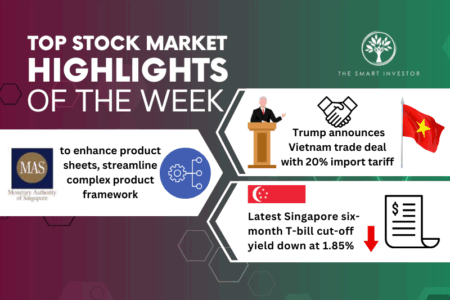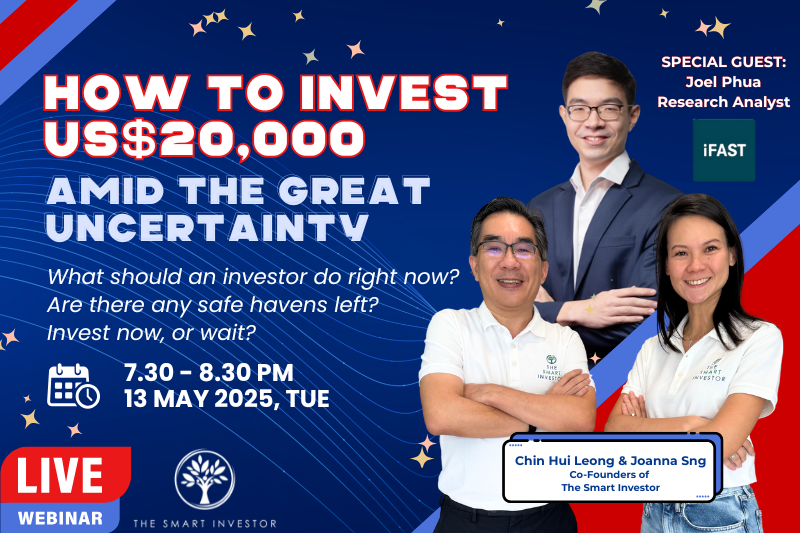This first week of August has been shocking to many investors.
Major world indices, including the US S&P 500 (^SPY) and NASDAQ Composite Index (^IXIC), as well as Japan’s Nikkei 225 (^NI225), experienced some of their worst days, stoking fears of an extended market sell-off.
Singapore’s Straits Time Index (^STI) also fell by 4.1% on 5 August 2024.
By 16 August, US markets had more than recouped those losses and more, with the NASDAQ Composite Index and S&P 500 popping 2.3% and 1.6% respectively.
These events highlight the ever-present volatility of the stock markets and demonstrate how difficult it is to accurately predict market movements.
To safeguard against such unpredictability, investors could consider exchange-traded funds (ETFs).
An ETF, which contains a diversified basket of securities that trades on an exchange, is more suitable for risk-averse investors.
After all, there is this famous quote: “Don’t put all your eggs in one basket”.
What should I consider?
There are a few aspects to look out for when choosing an ETF.
Firstly, the expense ratio is a crucial metric for many investors.
This ratio represents a percentage of the fund’s average net asset that is used for operational expenses, impacting the fund’s overall net asset value (NAV).
Investors will not receive a final bill detailing the expenses they paid.
Instead, these costs will be deducted from dividends and capital gains distributions, thereby lowering your returns.
A rule of thumb is that an expense ratio below 0.75% is acceptable, with the average expense ratio of ETFs being 0.57%.
Another key detail will be the assets under management (AUM) of the ETF.
Generally, it is advisable to choose ETFs with a high AUM, with the general rule being “the higher the better”.
A larger AUM suggests that the ETF is widely trusted and highly liquid, making it a safer option for investors.
The third factor is the dividend yield.
This metric indicates how much an investor earns in dividend income for every dollar invested.
While a high dividend yield is attractive, it’s important to note that if the dividend yield is increasing due to falling ETF prices, this might not be a favourable scenario.
Therefore, consistent growth in dividends issued is important too.
Lastly, we should analyse how the ETF has performed historically.
This can be assessed through the ETF’s returns, which can then be benchmarked against its peers within the same category.
Investors should steer clear of ETFs that have consistently underperformed relative to a general market index.
Let us take a look at several ETFs you can consider.
1. SPDR S&P 500 (SGX: S27)
The S&P 500 ETF is a well-known name to many investors.
While the ticker mentioned here is for the Singapore Exchange (SGX: S68), investors might be more familiar with the ticker NYSE: SPY.
Aimed to track the performance of the S&P 500 index, the ETF comprises America’s largest companies.
With nearly one-third of funds allocated to the information and technology sector, some of the ETF’s top holdings include Apple (NASDAQ: AAPL) and Nvidia (NASDAQ: NVDA), with weights of 6.9% and 6.8%, respectively.
As a passively-managed ETF, it boasts a low expense ratio of just 0.0945%, despite its large AUM of US$526.6 billion.
In terms of performance, the ETF has generated a 10-year trailing return of 13%, outperforming the large-blend category’s trailing return of 11.6%.
Lastly, the S&P 500 ETF has a trailing 12-month dividend yield of 1.3%.
Its latest quarterly dividend for the second quarter of 2024 was US$1.76, marking a 7.3% year on year increase.
Alternatively, investors might also consider Vanguard’s S&P 500 ETF (NYSE: VOO), which has a lower expense ratio of 0.03%.
2. STI ETF (SGX: ES3)
The STI ETF is Singapore’s first locally created ETF, designed to track the performance of the Straits Times Index.
The ETF aims to provide investors with exposure to Singapore’s leading companies at an affordable cost.
Singapore, being a financial hub, means that the finance sector makes up the bulk of the fund’s composition.
The fund is largely made up of shares from the financial sector, with major holdings DBS Group (SGX: D05), OCBC (SGX: O39), and UOB (SGX: U11) making up nearly half of the total ETF.
The STI ETF has an expense ratio of 0.26%, with an AUM of S$1.5 billion.
In terms of performance, the fund has posted a 10-year annualised return of 3.8% as of 30 June 2024.
However, it slightly lags behind the Straits Times Index, which has a 10-year annualised return of 4.2%.
This discrepancy may cause concern among investors.
On a more positive note, the ETF has a high dividend yield of 4.8%, with an upcoming dividend of S$0.086, a remarkable 17.8% year on year increase.
This dividend performance could be appealing to those looking for consistent income from their investments.
3. iShares MSCI World ETF (NYSE: URTH)
iShares MSCI World ETF is ideal for investors looking to gain exposure across global markets.
This ETF is benchmarked to the MSCI World Index, which tracks large and mid-cap companies across 23 developed markets.
Looking at the fund’s characteristics, US companies dominate, constituting 71.8% of the fund, followed by Japan and the UK following at 5.7% and 3.7%, respectively.
The ETF maintains a current expense ratio of 0.24%, with an AUM totalling US$3.6 billion as of 19 August 2024.
As of 30 June 2024, the fund has achieved an impressive 10-year annualised return of 9.38% which was slightly higher than the benchmark MSCI World Index’s performance of 9.16%.
This ETF also offers another appealing attribute – lower volatility, evidenced by its three-year beta of 0.97 relative to the S&P 500.
Lastly, the ETF has a current dividend yield of 1.6%, with its latest dividend of US$1.19 reflecting a year on year growth of 1.7%.
If you’re looking to buy the next S$100 billion stock in SGX, pay attention to our newest FREE report. We dug deep and uncovered which SGX companies have the potential for massive growth. Even if the numbers look great, things aren’t always what they seem. We let the numbers tell us the full story. Download for free now!
Follow us on Facebook and Telegram for the latest investing news and analyses!
Disclosure: Aw Kai Rui owns shares of Nvidia.





